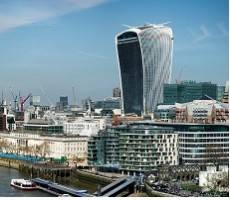September 29, 2015
Generation Z is the smart generation that will redefine work, claims report 0
 The trade association BSRIA has launched a White Paper called Products and Systems for Generation Z in Reduced Carbon Buildings to explore the future needs of buildings designed for what it calls the ‘smart generation’. It considers ways in which the value of buildings might be improved in order to raise productivity and wellbeing for occupiers and at the same time generate new revenue streams for suppliers. Authored by Jeremy Towler and based on data collected in March of this year, it suggests that Generation Z are the “first tribe of true digital natives” and are ‘smarter and more prudent than Generation Y. They are empowered, have more job choices, seek freedom of movement and flexible working policies. They are the ‘see it – want it’, ‘touch it – get it now’ generation.’ The report claims this will define their relationship with work and drive demand for flexible working and on-demand offices.
The trade association BSRIA has launched a White Paper called Products and Systems for Generation Z in Reduced Carbon Buildings to explore the future needs of buildings designed for what it calls the ‘smart generation’. It considers ways in which the value of buildings might be improved in order to raise productivity and wellbeing for occupiers and at the same time generate new revenue streams for suppliers. Authored by Jeremy Towler and based on data collected in March of this year, it suggests that Generation Z are the “first tribe of true digital natives” and are ‘smarter and more prudent than Generation Y. They are empowered, have more job choices, seek freedom of movement and flexible working policies. They are the ‘see it – want it’, ‘touch it – get it now’ generation.’ The report claims this will define their relationship with work and drive demand for flexible working and on-demand offices.




















 The recent growth in prime headline office rents has continued across the UK’s regional
The recent growth in prime headline office rents has continued across the UK’s regional 
 Large firms that occupy several separate floors in a prime office may need to pay tens of thousands of pounds more in rates, property managers have been warned. The decision by the UK Supreme Court on business rates in shared office buildings will lead to higher fees for many businesses in Scotland, according to commercial property experts at Colliers International. The firm says that the case of Woolway Valuation Office v Mazars, in which the Supreme Court held that businesses occupying space across several floors should pay separate rates for each, will lead to changes in valuations across the country that will cost firms millions of pounds. Up until now, such arrangements were charged as a “single occupation” and benefited from economies of scale. Paying for two separate sets of rates is likely to be more expensive, and the court decision even allows for the changes to be implemented retrospectively.
Large firms that occupy several separate floors in a prime office may need to pay tens of thousands of pounds more in rates, property managers have been warned. The decision by the UK Supreme Court on business rates in shared office buildings will lead to higher fees for many businesses in Scotland, according to commercial property experts at Colliers International. The firm says that the case of Woolway Valuation Office v Mazars, in which the Supreme Court held that businesses occupying space across several floors should pay separate rates for each, will lead to changes in valuations across the country that will cost firms millions of pounds. Up until now, such arrangements were charged as a “single occupation” and benefited from economies of scale. Paying for two separate sets of rates is likely to be more expensive, and the court decision even allows for the changes to be implemented retrospectively.
 The number of firms planning to expand in London is at its highest level (50 percent) since 2012, though retaining employees and improving the capital’s infrastructure remain key concerns. According to the re-launched
The number of firms planning to expand in London is at its highest level (50 percent) since 2012, though retaining employees and improving the capital’s infrastructure remain key concerns. According to the re-launched 










October 2, 2015
For once and for all, please stop with this ‘death of the office’ stuff 0
by Mark Eltringham • Comment, Furniture, Property, Technology, Workplace design
(more…)